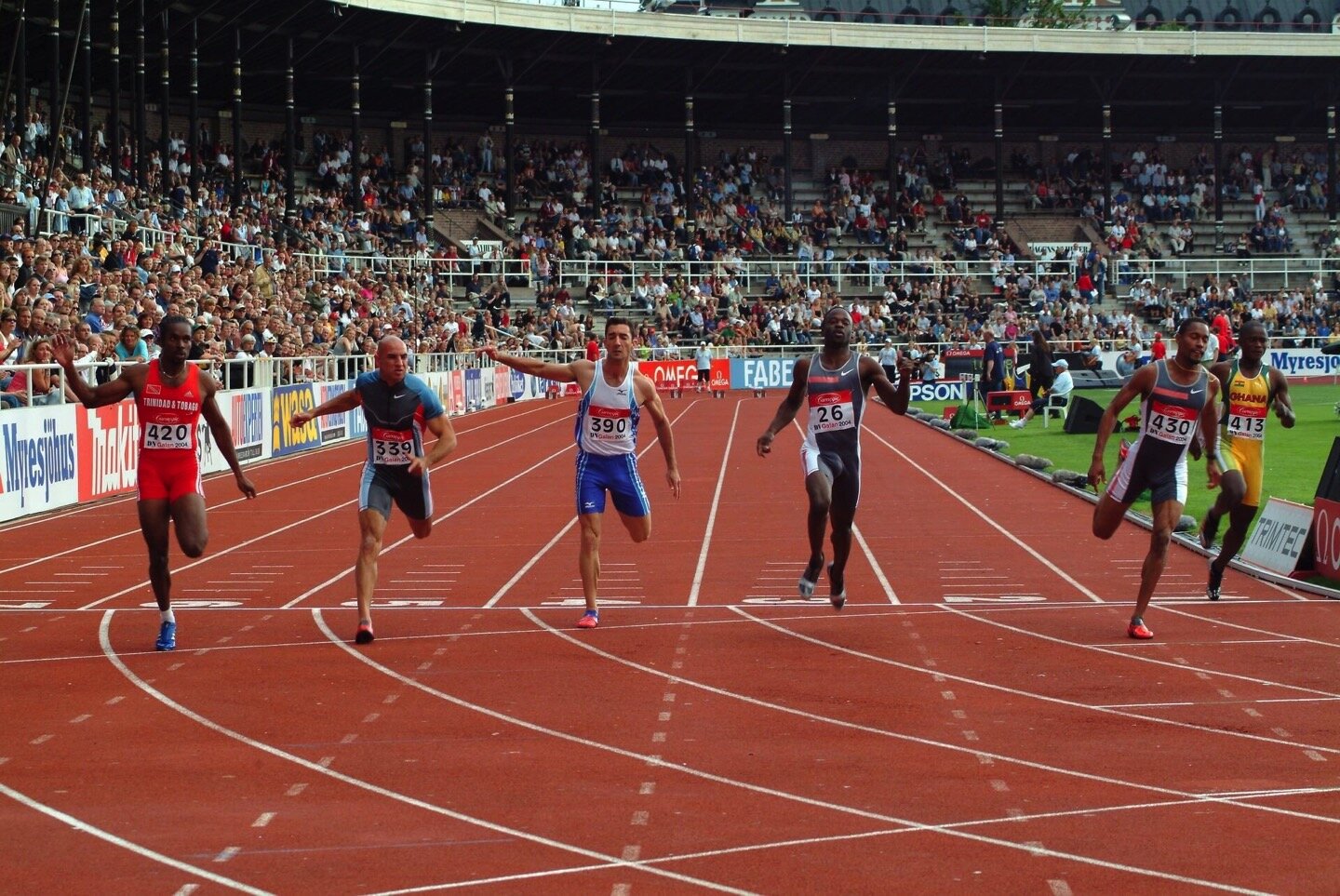If you’ve dealt with low back pain, then you know how debilitating it can be to do even the simplest daily activities. Improving core strength, flexibility, and correcting poor body mechanics are the key to managing and preventing pain. Continue reading to learn the exact exercises I prescribe to my clients that lead to maximum relief.
Read moreSpeed Training for Long Distance Runners
Running a fast marathon takes more than just logging a bunch of miles day in and day out. It requires a thought-out plan that includes a long run, shorter easier runs, and faster-paced runs or interval training. Of course, other non-running components are also fixed into the equation such as strength training, stretching, and drills that mainly help with injury prevention, overall strength improvement, and running mechanics. Most runners will incorporate tempo runs as their form of faster-paced workouts, which is crucial for building the endurance needed to hold that faster goal pace for several miles at once. The problem with only using this form of speed work for marathon and half marathon training is that it does little to help improve running economy.
What is Running Economy?
In simple terms, running economy is defined as the relationship between oxygen consumption and running speed. Oxygen consumption is measured by VO2 max, which is the maximum amount of volume of oxygen used during intense exercise. Although VO2 max is often used as a true predictor of fitness, it does not always predict someone’s ability to run a fast marathon. Running economy, on the other hand, is a better indicator of distance running performance because it takes several other factors into consideration. It considers the maximum amount of oxygen consumed at a specific constant speed. Therefore a marathoner who is able to hold a five minute per mile pace for 26.2 miles has a better running economy than a short distance runner able to hold the same pace for only 400 meters.
Why is all of this important? Well, for a marathoner trying to improve their overall pace with every race they compete in, it will require them to incorporate specific speed workouts to improve their running economy. This is even more important as we age since the first thing to deteriorate with age is speed. Rather than focusing on improving specific physiological systems in the body such as VO2 max and lactate threshold, speed development workouts will focus on improving neuromuscular responses. This means improving the speed at which your brain sends signals to your muscles to fire by relying on fast twitch muscle fibers—possibly ones barely used for most recreational marathoners. This type of training will eventually lead to running at your marathon goal pace for longer with less effort. That X-minute mile pace will finally feel doable!
Sample Speed Workouts
Run 20-24 x 200-meter repeats at 5k to 10k effort with a 200-meter jog in between. This workout should not feel taxing at all since you are not supposed to be pushing the 200-meter repeats at an all-out effort. The pace should be controlled and faster than marathon pace—about 30 seconds per mile faster. The 200-meter recovery jog should not be a significantly slower pace either—think slowing your pace down by 2 minutes per mile than you ran the hard 200 meters.
Run 12-16 x 400-meter repeats at 5k to 10k pace with a 200-meter jog in between repetitions.
Run 8-10 x 800-meter repeats at 5k to 10k pace with a 400-meter jog in between repetitions.
Run 6-8 x 1000-meter repeats at 5k to 10k pace with a 400- to 600-meter jog in between repetitions.
Run 6-8 x one mile beginning with the first mile at half marathon pace and cutting down 10-15 seconds per mile with each repeat. Recover for one mile in between each repetition.
Each of these workouts should always include two to three miles for a warm-up followed by some dynamic stretching and drills. Always finish speed work with a cool-down of one to two miles. A good idea is to switch up the speed sessions each week but always come back to each after a few weeks to check your improvements. Since you are always trying to run at 5k to 10k pace, what you will see improving is your effort. Over time the repeats at your 5k or 10k pace should feel easier. As mentioned this pace should equate to 20 to 30 seconds per mile faster than your marathon goal pace.
As you can see marathon training can include a variety of speed workouts to choose from, unlike 5k or 10k training where you mostly focus on the shorter sessions of 100- to 400-meter repeats. These workouts used to improve running economy are more beneficial to marathoners looking to improve their sustained pace for a race. Most runners obsess over their VO2 max improvements but studies have shown that VO2 max may not be as reliable as running economy when determining marathon ability. Research states that running economy may vary by up to 30% in runners with similar VO2 max values. If incorporating these types of speed sessions throughout your training cycle, you should be able to hold that goal pace with less effort throughout your race. Once you accomplish this, your next race will require you to drop to a new 5k to 10k pace for these speed sessions and on you go with more PRs!
Sources
Kyle R Barnes and Andrew E Kilding, Running Economy: Measurement, Norms, and Determining Factors, Journal, May 8, 2020.
Depletion Running: Should You Try It?
Breakfast is the most important meal of the day, right? Yes, of course, but there are times when it may be a good idea to skip it, or at least wait a little later in the morning to have it. Runners know how important it is to fuel their bodies for their runs, especially for those hard and long workouts. It is always advised to have the proper amount of calories and carbohydrates before long runs and races in order to supply the muscles with the glycogen it requires to be able to push through the run. During half and full marathons, as well as ultra races, mid-run fuel is also important to keep those energy stores as high as possible to keep us going. It is during the end of races that we feel the depletion in our bodies from lack of fuel, which creates that ‘zombie-like’ final 10K of the marathon, otherwise known as “bonking”.
What is a Depletion Run?
The concept of depletion runs has grown to be quite popular, especially in the elite world. This is basically when runs are performed in a starved state. This will usually be in the morning after a full night’s sleep when glycogen stores are at its lowest. The reason some athletes do this is to train their bodies to use their fat stores so that come race day, they are able to last longer when energy is low. Many runners swear by this training method but also report it to be uncomfortable and make their runs much harder to get through. If you are willing to go through several runs feeling low on energy in hopes to not hit “the wall” during your marathon, then it may be worth a try.
The Science
When you run without fueling up beforehand, the body will rely on fat stores for energy. This energy, though, will not give you the same feel as the energy from glycogen, which we get from the carbohydrates we ingest. What this will train the body to do is use fat stores during as much of a race as possible and save the glycogen stores for when we really need it—the end of the race. The important thing to remember in order to keep from using any stored glycogen for the first half of your training run is to keep a conversational pace throughout the entire run. Any faster, and you will risk dipping into the glycogen you need to save.
The Method
It is important to have a decently large dinner the night before your depletion run, so that your body can store as much fat as possible overnight. The morning of your run, simply do not ingest anything except for water (although some runners also deplete themselves of hydration, which is a dangerous mistake). For long runs, where you would normally refuel mid-run with gels or chews, you will skip this part on a depletion run. Immediately after completing this run, it is extremely important to refuel with plenty of carbohydrates—at least 50 grams and around 25 grams of protein. An hour later you should have another carbohydrate-rich meal.
When to Practice Depletion
This type of training should not be done with every training run. It is beneficial to perform depletion runs 3 or 4 times for long runs early on in your training cycle when you do not have to worry about practicing your race fueling strategy. Short and easy runs are good times to practice depletion as well, but mostly for the sake of teaching yourself to get used to the ‘not eating’ part. Never try this for speed work or marathon paced runs because these harder workouts require glycogen in order to be able to be successful. If you attempt to run on an empty stomach for hard workouts you will not be able to push yourself as hard and therefore limit any performance gains.
Morning runs are the easiest times to practice depletion since you have not used much energy and it is when you will feel the least hungry. Making sure to hydrate the night before and the morning of will help with any hunger and keep you from getting dehydrated during your run. Only experienced long-distance runners should try a depletion run. If you are not so experienced and want to give it a go, first try cutting your regular pre-run fuel intake little by little over the course of weeks.
Depletion runs are not for everyone, but if you normally feel the ‘bonk’ at the end of your races, it MAY BE worth a try. If you are not a fan of feeling hungry or weak on any type of run, then it most likely isn’t a training technique you should try. This method of training will not cause weight loss or make you a faster runner. It is simply to help with endurance, although there are other, more tolerable, ways to improve endurance. Training the body to rely on fat stores and save glycogen for those last six miles, will allow you to run longer at your goal pace.
Sources
Niels Ørtenblad, Håkan Westerblad, and Joachim Nielsen, Muscle Glycogen Stores and Fatigue, Journal, Dec 12, 2019.






